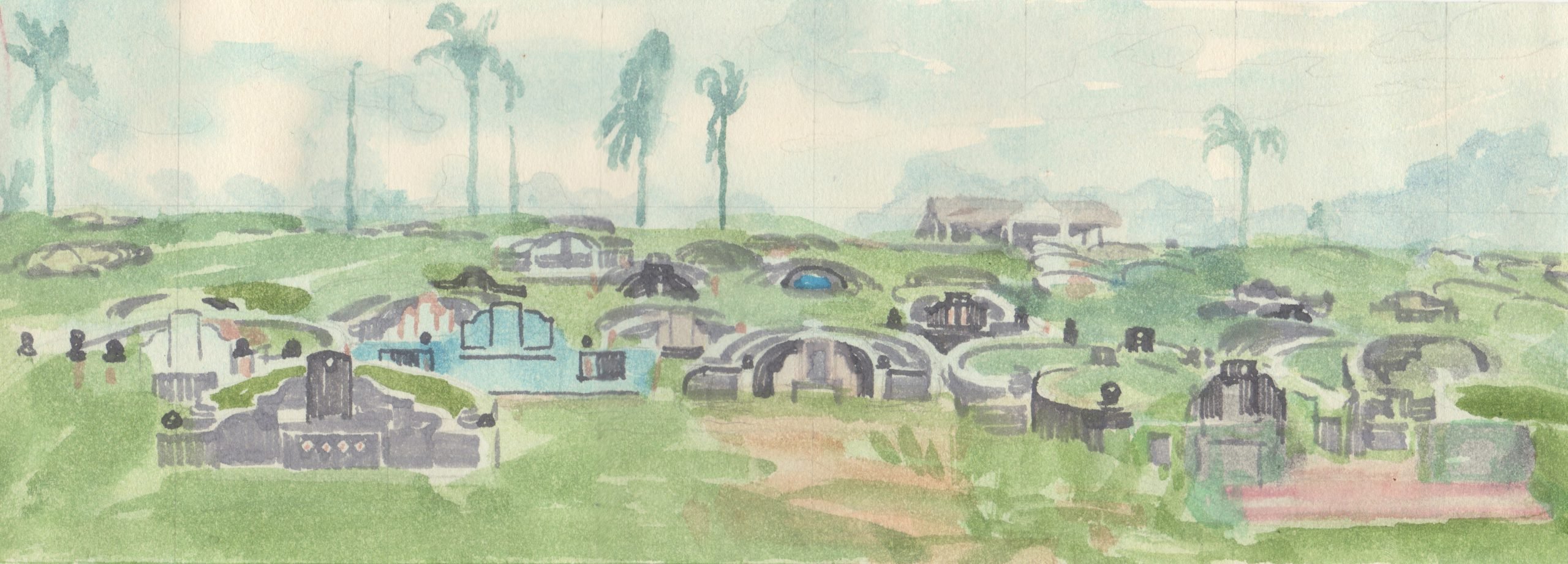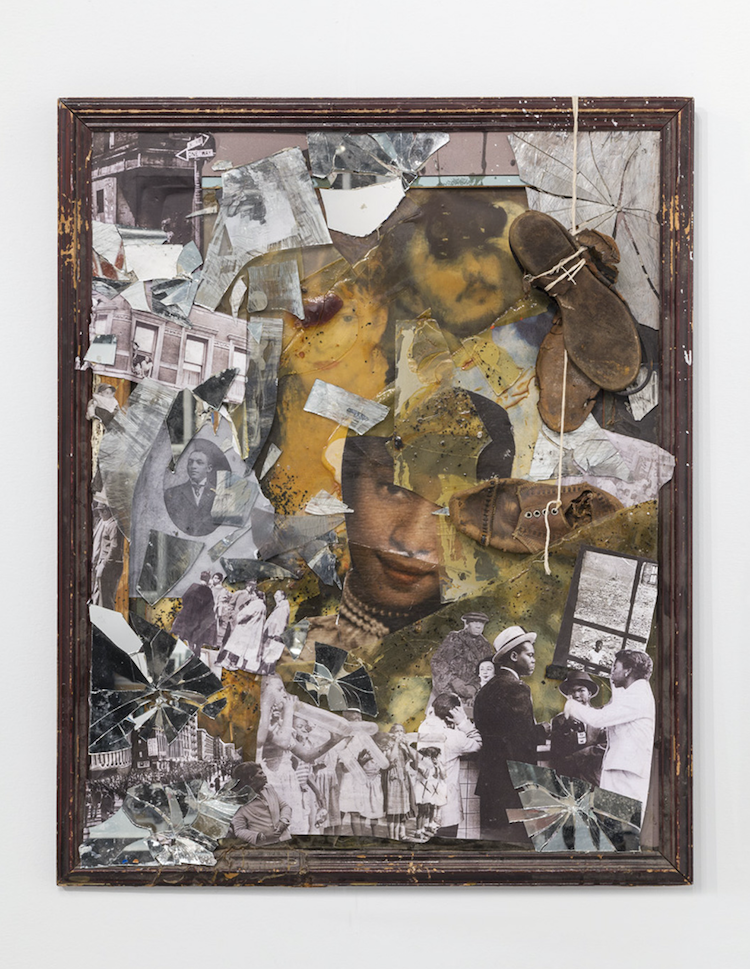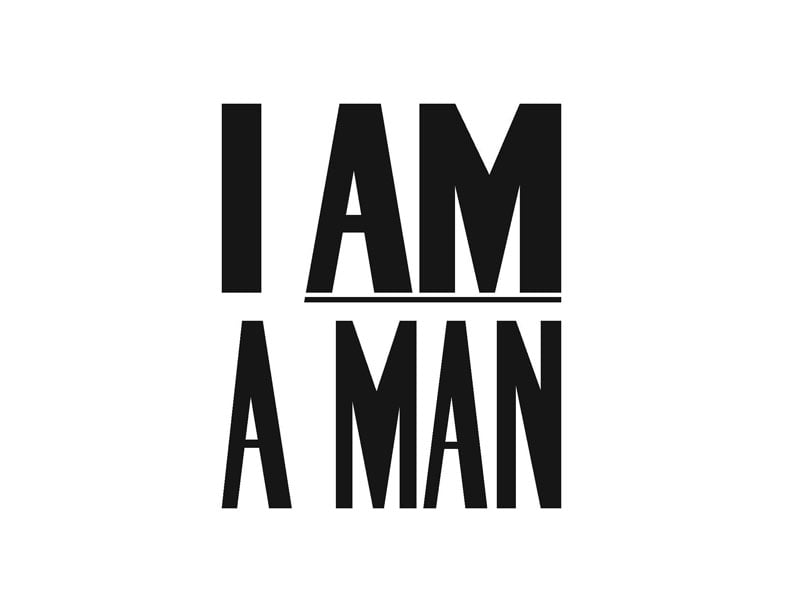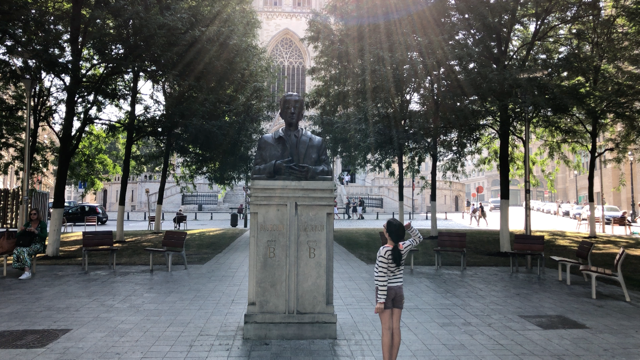
© » KADIST
Gan Chin Lee
Drawing & Print (Drawing & Print)
In Studies of Chinese New Villages II Gan Chin Lee’s realism appears in the format of a fieldwork notebook; capturing present-day surroundings while unpacking their historical memory. The watercolor images on each note paper document the artist’s visits to various Chinese ‘New Villages’ in Malaysia. The studies, some in color and others in grey-scale, from this series include architectural ruins, portraits of people and animals, and groups of people in protest.

© » KADIST
Candice Lin
For the work Wigan Pit-Brow Women: Intersections with the Caribbean (mobile) , Candice Lin studied English Victorian Arthur Munby’s racialized and masculinized drawings of working-class white female miners. Specifically, Lin’s work critically addresses Munby’s observations about the laborers’ femininity that was more concerned with the modesty of the women, than that they toiled in life-threatening situations. “Pit brow women” or “pit brow lasses” were female surface laborers at British collieries.

© » KADIST
Gan Chin Lee
Drawing & Print (Drawing & Print)
In Studies of Chinese New Villages II Gan Chin Lee’s realism appears in the format of a fieldwork notebook; capturing present-day surroundings while unpacking their historical memory. The watercolor images on each note paper document the artist’s visits to various Chinese ‘New Villages’ in Malaysia. The studies, some in color and others in grey-scale, from this series include architectural ruins, portraits of people and animals, and groups of people in protest.

© » KADIST
Gan Chin Lee
Drawing & Print (Drawing & Print)
In Studies of Chinese New Villages II Gan Chin Lee’s realism appears in the format of a fieldwork notebook; capturing present-day surroundings while unpacking their historical memory. The watercolor images on each note paper document the artist’s visits to various Chinese ‘New Villages’ in Malaysia. The studies, some in color and others in grey-scale, from this series include architectural ruins, portraits of people and animals, and groups of people in protest.

© » KADIST
Gan Chin Lee
Drawing & Print (Drawing & Print)
In Studies of Chinese New Villages II Gan Chin Lee’s realism appears in the format of a fieldwork notebook; capturing present-day surroundings while unpacking their historical memory. The watercolor images on each note paper document the artist’s visits to various Chinese ‘New Villages’ in Malaysia. The studies, some in color and others in grey-scale, from this series include architectural ruins, portraits of people and animals, and groups of people in protest.

© » KADIST
Gan Chin Lee
Drawing & Print (Drawing & Print)
In Studies of Chinese New Villages II Gan Chin Lee’s realism appears in the format of a fieldwork notebook; capturing present-day surroundings while unpacking their historical memory. The watercolor images on each note paper document the artist’s visits to various Chinese ‘New Villages’ in Malaysia. The studies, some in color and others in grey-scale, from this series include architectural ruins, portraits of people and animals, and groups of people in protest.

© » KADIST
Gan Chin Lee
Drawing & Print (Drawing & Print)
In Studies of Chinese New Villages II Gan Chin Lee’s realism appears in the format of a fieldwork notebook; capturing present-day surroundings while unpacking their historical memory. The watercolor images on each note paper document the artist’s visits to various Chinese ‘New Villages’ in Malaysia. The studies, some in color and others in grey-scale, from this series include architectural ruins, portraits of people and animals, and groups of people in protest.

© » KADIST
Gan Chin Lee
Drawing & Print (Drawing & Print)
In Studies of Chinese New Villages II Gan Chin Lee’s realism appears in the format of a fieldwork notebook; capturing present-day surroundings while unpacking their historical memory. The watercolor images on each note paper document the artist’s visits to various Chinese ‘New Villages’ in Malaysia. The studies, some in color and others in grey-scale, from this series include architectural ruins, portraits of people and animals, and groups of people in protest.

© » KADIST
Gan Chin Lee
Drawing & Print (Drawing & Print)
In Studies of Chinese New Villages II Gan Chin Lee’s realism appears in the format of a fieldwork notebook; capturing present-day surroundings while unpacking their historical memory. The watercolor images on each note paper document the artist’s visits to various Chinese ‘New Villages’ in Malaysia. The studies, some in color and others in grey-scale, from this series include architectural ruins, portraits of people and animals, and groups of people in protest.

© » KADIST
Gan Chin Lee
Drawing & Print (Drawing & Print)
In Studies of Chinese New Villages II Gan Chin Lee’s realism appears in the format of a fieldwork notebook; capturing present-day surroundings while unpacking their historical memory. The watercolor images on each note paper document the artist’s visits to various Chinese ‘New Villages’ in Malaysia. The studies, some in color and others in grey-scale, from this series include architectural ruins, portraits of people and animals, and groups of people in protest.

© » KADIST
Gan Chin Lee
Drawing & Print (Drawing & Print)
In Studies of Chinese New Villages II Gan Chin Lee’s realism appears in the format of a fieldwork notebook; capturing present-day surroundings while unpacking their historical memory. The watercolor images on each note paper document the artist’s visits to various Chinese ‘New Villages’ in Malaysia. The studies, some in color and others in grey-scale, from this series include architectural ruins, portraits of people and animals, and groups of people in protest.

© » KADIST
Gan Chin Lee
Drawing & Print (Drawing & Print)
In Studies of Chinese New Villages II Gan Chin Lee’s realism appears in the format of a fieldwork notebook; capturing present-day surroundings while unpacking their historical memory. The watercolor images on each note paper document the artist’s visits to various Chinese ‘New Villages’ in Malaysia. The studies, some in color and others in grey-scale, from this series include architectural ruins, portraits of people and animals, and groups of people in protest.

© » KADIST
American Artist
From suicides, to gang violence, to the epidemic abuse of force by police departments (predominantly against Black men), to school and mass shootings, there is perhaps no more urgent issue in the United States than gun control. The color blue is a proxy for both sadness, and a color that is emblematic of American law enforcement services. I Am Blue, 1 by American Artist is a sculpture that fuses a school desk with a ballistic shield.

© » KADIST
Gan Chin Lee
Drawing & Print (Drawing & Print)
In Studies of Chinese New Villages II Gan Chin Lee’s realism appears in the format of a fieldwork notebook; capturing present-day surroundings while unpacking their historical memory. The watercolor images on each note paper document the artist’s visits to various Chinese ‘New Villages’ in Malaysia. The studies, some in color and others in grey-scale, from this series include architectural ruins, portraits of people and animals, and groups of people in protest.

© » KADIST
Phan Quang
Phan Quang’s portrait series Re/cover grapples with a lesser-known history in Vietnam. After World War II, many Japanese soldiers who fought in Vietnam stayed in the country. They married Vietnamese women, had children, and lived in the country until Japan recalled them home.

© » KADIST
Steffani Jemison
In Escaped Lunatic , a steady stream of figures run across the screen, sprinting, jumping, and rolling through the streets of Houston. The work is part of a trilogy that borrows its narrative structure from early-20th-century cinema. The artist employs the chase genre, which has often depicted African Americans in scenes of flight from various forms of authority.

© » KADIST
Baseera Khan
Designed by the artist and fabricated in collaboration with Kashmiri artisans in India, Baseera Khan’s Psychedelic Prayer Rugs combine visual iconography traditional to Islam, such as the crescent moon and lunar calendar, with brightly coloured symbols of personal significance to the artist: a pair of embroidered sneakers, a fragment of an Urdu poem, and the Purple Heart medal. Visually seductive yet charged with political and symbolic associations, the rugs bridge elements of American popular culture with aspects of Islamic worship that may be misunderstood in contemporary secular contexts. Encouraged by Khan to take their shoes off and interact with the rugs, viewers participate in a decolonizing process as they meditate on their poetic allusions or perform the traditional salat, the daily prayers that constitute one of the five pillars of Islam, the others being faith, charity, fasting, and pilgrimage to Mecca.

© » KADIST
Khadim Ali & Sher Ali
Drawing & Print (Drawing & Print)
Transaction/Evacuation is a collaborative painting by Khadim Ali and Sher Ali, and is part of a larger collaborative body of works by the artists, which share the same title. Like Khadim Ali, Sher Ali is also part of the Hazara people, and experienced massive personal and social trauma early in life, losing his parents at the age of ten and witnessing the devastation of the Afghan Civil War in his native Kabul. The horned figure in the foreground represents Rustam, a legendary hero in Iranian mythology and central character in the Shahnameh, who depicted here by the artists as a potbellied demon, stripped away of its heroism.

© » KADIST
Baseera Khan
Designed by the artist and fabricated in collaboration with Kashmiri artisans in India, Baseera Khan’s Psychedelic Prayer Rugs combine visual iconography traditional to Islam, such as the crescent moon and lunar calendar, with brightly coloured symbols of personal significance to the artist: a pair of embroidered sneakers, a fragment of an Urdu poem, and the Purple Heart medal. Visually seductive yet charged with political and symbolic associations, the rugs bridge elements of American popular culture with aspects of Islamic worship that may be poorly understood in contemporary secular contexts. Encouraged by Khan to take their shoes off and interact with the rugs, viewers participate in a decolonizing process as they meditate on their poetic allusions or perform the traditional salat, the daily prayers that constitute one of the five pillars of Islam, the others being faith, charity, fasting, and pilgrimage to Mecca.

© » KADIST
Karla Dickens
Karla Dickens’s collage Beneath the skim board addresses issues of discrimination and racism towards Indigenous communities in Australia through a constellation of historical and current events. Dickens spent over a year collecting and modifying ubiquitous objects into sculptural collages that commemorate former circus performers of Indigenous Australian descent. Assembled from various fabrics, knick-knacks and other materials, these frenetic compositions celebrate the campy glamour of circus performers, but also articulates the hidden mistreatment experienced by the performers, and more broadly, the lives of Indigenous communities in Australia.

© » KADIST
Ha Tae-Bum
Ha Tae-Bum’s “White” series, started in 2008, begins with photographic images from the mainstream media depicting sites of conflict or crisis. The artist eliminates human presence, miscellaneous details, and all color from the images, then “rebuilds” them into quiet, achromatic models with thin white paper. Once complete, the models are photographed in a nearly identical composition as the original image.

© » KADIST
Wong Wai Yin
In this work the artist stages a humorously violent “intervention” against male-dominated cultures of art production in present-day China. For this video, Wong accompanied six male friends from art school to a group show of their work titled “Inside Looking Out” at Osage Gallery in Beijing. Throughout her visit, she was rarely acknowledged for her own creative accomplishments and was more frequently introduced as an artist’s girlfriend, and often without name.

© » KADIST
Tuan Andrew Nguyen
This work presents the image of an immolated monk engraved on a baseball bat. The flames surround him eroding the extremity of the bat. The delicate sculpture refers to the sacrifice of the Buddhist monk, Thich Quang Duc, who immolated himself on June 16th 1963, in reaction to the discrimination and the repressive politics of the Diem Catholic regime (regime installed by the Americans) towards the Buddhists.

© » KADIST
Igor Grubic
The installation “East Side Story” is based on events that took place in the streets of Belgrade in 2001 and Zagreb in 2002, during the Gay Pride demonstrations, where the participants were the victims of verbal and physical injury by neo-Nazi groups and other citizens. This work is composed of two projections: the first uses television images of the demonstrations while the second is the reconstitution of the events performed by dancers. This piece witnesses nationalism at work in society, aiming particularly at the “internal enemy that sexual minorities might represent”.

© » KADIST
Abigail DeVille
The work La Loge Harlem focuses on the history of Harlem and its development over the last 200 years. It was a playground for the rich in the 19th century and where Old New York had its summer homes and diversions. The center image is a portrait of the artist’s grandmother when she was 16 in 1949.

© » KADIST
Hank Willis Thomas
The image is borrowed from protests during Civil Rights where African Americans in the south would carry signs with the same message to assert their rights against segregation and racism. Historically, in countries such as the US and South Africa, the term “boy” was used as a pejorative and racist insult towards men of color, slaves in particular, signifying their alleged subservient status as being less than men. In response, Am I Not A Man And A Brother?
Gan Chin Lee
Gan Chin Lee is a Malaysian artist of Chinese descent known across Southeast Asia for his realist paintings that painstakingly register the ethnic and religious complexities of Malaysia...
Baseera Khan
Designed by the artist and fabricated in collaboration with Kashmiri artisans, Baseera Khan’s Psychedelic Prayer Rugs combine visual iconography traditional to Islam, such as the crescent moon and lunar calendar, with brightly colored symbols of personal significance to the artist: a pair of embroidered sneakers, a fragment of an Urdu poem, and the Purple Heart medal...
Hank Willis Thomas
- location: New York, New York
- year born: 1976
- gender: male
- nationality: American
- home town: Plainfield, New Jersey
Wong Wai Yin
Wong Wai Yin is an interdisciplinary artist who experiments with a variety of media ranging from painting, sculpture, collage, performance, video, installations and photography...
Phan Quang
Visual artist and photographer Phan Quang stages nuanced compositions that illustrate the relationship between global historical events and the personal histories of families and communities in Vietnam...
Karla Dickens
Karla Dickens is a Wiradjuri artist whose work spans sculpture, textiles, poetry, painting, photography, and found material collage...
American Artist
American Artist makes experimental work in the form of sculpture, video, and software that comments on histories of race, technology and forms of knowledge production...
Steffani Jemison
Steffani Jemison is an interdisciplinary artist whose work considers issues that arise when conceptual practices are inflected by black history and vernacular culture...
Tuan Andrew Nguyen
Tuan Andrew Nguyen is an artist and filmmaker, one of the three founders of The Propeller Group created in 2006...
Ha Tae-Bum
Ha Tae-Bum (b...
Igor Grubic
- location: Zagreb, Hrvatska
- year born: 1969
- gender: male
- nationality: Croatian
Abigail DeVille
African American artist Abigail DeVille’s large sculptures and installations reflect on social and cultural oppression, racial identity, and discrimination in American history...
Khadim Ali & Sher Ali
Khadim Ali was born in Quetta, Pakistan, after his family fled their home in Afghanistan to escape persecution from the Taliban...
-
2000-2009
Wong Wai Yin
2008In this work the artist stages a humorously violent “intervention” against male-dominated cultures of art production in present-day China...
-
2010-2019
Ha Tae-Bum
2010Ha Tae-Bum’s “White” series, started in 2008, begins with photographic images from the mainstream media depicting sites of conflict or crisis...
Tuan Andrew Nguyen
2012This work presents the image of an immolated monk engraved on a baseball bat...
Igor Grubic
2013The installation “East Side Story” is based on events that took place in the streets of Belgrade in 2001 and Zagreb in 2002, during the Gay Pride demonstrations, where the participants were the victims of verbal and physical injury by neo-Nazi groups and other citizens...
Phan Quang
2013Phan Quang’s portrait series Re/cover grapples with a lesser-known history in Vietnam...
Hank Willis Thomas
2013The image is borrowed from protests during Civil Rights where African Americans in the south would carry signs with the same message to assert their rights against segregation and racism...
Khadim Ali & Sher Ali
Drawing & Print
2014(Drawing & Print) Transaction/Evacuation is a collaborative painting by Khadim Ali and Sher Ali, and is part of a larger collaborative body of works by the artists, which share the same title...
Candice Lin
2015For the work Wigan Pit-Brow Women: Intersections with the Caribbean (mobile) , Candice Lin studied English Victorian Arthur Munby’s racialized and masculinized drawings of working-class white female miners...
Baseera Khan
2017Designed by the artist and fabricated in collaboration with Kashmiri artisans in India, Baseera Khan’s Psychedelic Prayer Rugs combine visual iconography traditional to Islam, such as the crescent moon and lunar calendar, with brightly coloured symbols of personal significance to the artist: a pair of embroidered sneakers, a fragment of an Urdu poem, and the Purple Heart medal...
Abigail DeVille
2017The work La Loge Harlem focuses on the history of Harlem and its development over the last 200 years...
Baseera Khan
2017Designed by the artist and fabricated in collaboration with Kashmiri artisans in India, Baseera Khan’s Psychedelic Prayer Rugs combine visual iconography traditional to Islam, such as the crescent moon and lunar calendar, with brightly coloured symbols of personal significance to the artist: a pair of embroidered sneakers, a fragment of an Urdu poem, and the Purple Heart medal...
Gan Chin Lee
Drawing & Print
2019(Drawing & Print) In Studies of Chinese New Villages II Gan Chin Lee’s realism appears in the format of a fieldwork notebook; capturing present-day surroundings while unpacking their historical memory...
Gan Chin Lee
Drawing & Print
2019(Drawing & Print) In Studies of Chinese New Villages II Gan Chin Lee’s realism appears in the format of a fieldwork notebook; capturing present-day surroundings while unpacking their historical memory...
Gan Chin Lee
Drawing & Print
2019(Drawing & Print) In Studies of Chinese New Villages II Gan Chin Lee’s realism appears in the format of a fieldwork notebook; capturing present-day surroundings while unpacking their historical memory...
Gan Chin Lee
Drawing & Print
2019(Drawing & Print) In Studies of Chinese New Villages II Gan Chin Lee’s realism appears in the format of a fieldwork notebook; capturing present-day surroundings while unpacking their historical memory...
Gan Chin Lee
Drawing & Print
2019(Drawing & Print) In Studies of Chinese New Villages II Gan Chin Lee’s realism appears in the format of a fieldwork notebook; capturing present-day surroundings while unpacking their historical memory...
Gan Chin Lee
Drawing & Print
2019(Drawing & Print) In Studies of Chinese New Villages II Gan Chin Lee’s realism appears in the format of a fieldwork notebook; capturing present-day surroundings while unpacking their historical memory...
Gan Chin Lee
Drawing & Print
2019(Drawing & Print) In Studies of Chinese New Villages II Gan Chin Lee’s realism appears in the format of a fieldwork notebook; capturing present-day surroundings while unpacking their historical memory...
Gan Chin Lee
Drawing & Print
2019(Drawing & Print) In Studies of Chinese New Villages II Gan Chin Lee’s realism appears in the format of a fieldwork notebook; capturing present-day surroundings while unpacking their historical memory...
Gan Chin Lee
Drawing & Print
2019(Drawing & Print) In Studies of Chinese New Villages II Gan Chin Lee’s realism appears in the format of a fieldwork notebook; capturing present-day surroundings while unpacking their historical memory...
American Artist
2019From suicides, to gang violence, to the epidemic abuse of force by police departments (predominantly against Black men), to school and mass shootings, there is perhaps no more urgent issue in the United States than gun control...
Gan Chin Lee
Drawing & Print
2019(Drawing & Print) In Studies of Chinese New Villages II Gan Chin Lee’s realism appears in the format of a fieldwork notebook; capturing present-day surroundings while unpacking their historical memory...
Karla Dickens
2019Karla Dickens’s collage Beneath the skim board addresses issues of discrimination and racism towards Indigenous communities in Australia through a constellation of historical and current events...
Gan Chin Lee
Drawing & Print
2019(Drawing & Print) In Studies of Chinese New Villages II Gan Chin Lee’s realism appears in the format of a fieldwork notebook; capturing present-day surroundings while unpacking their historical memory...






